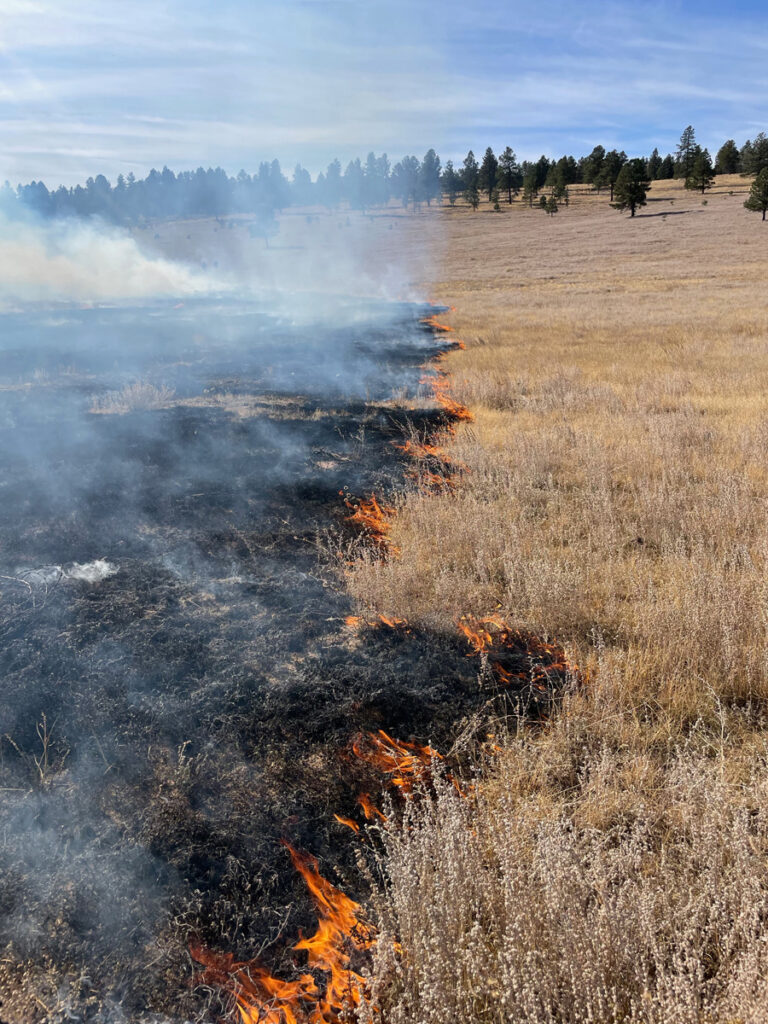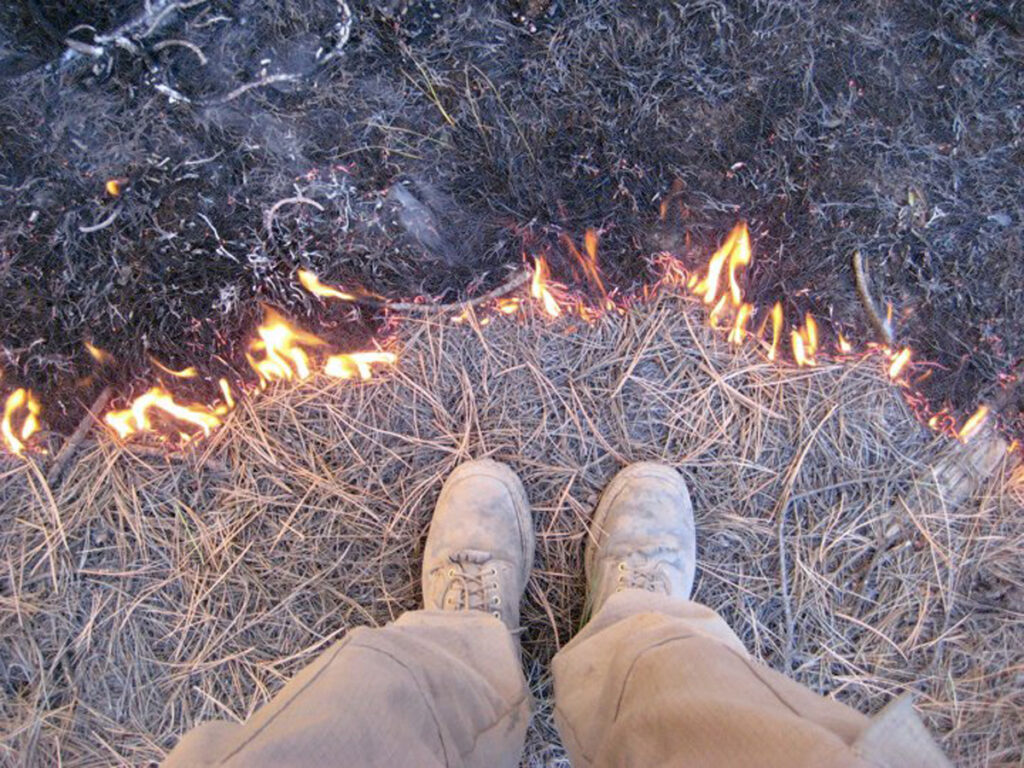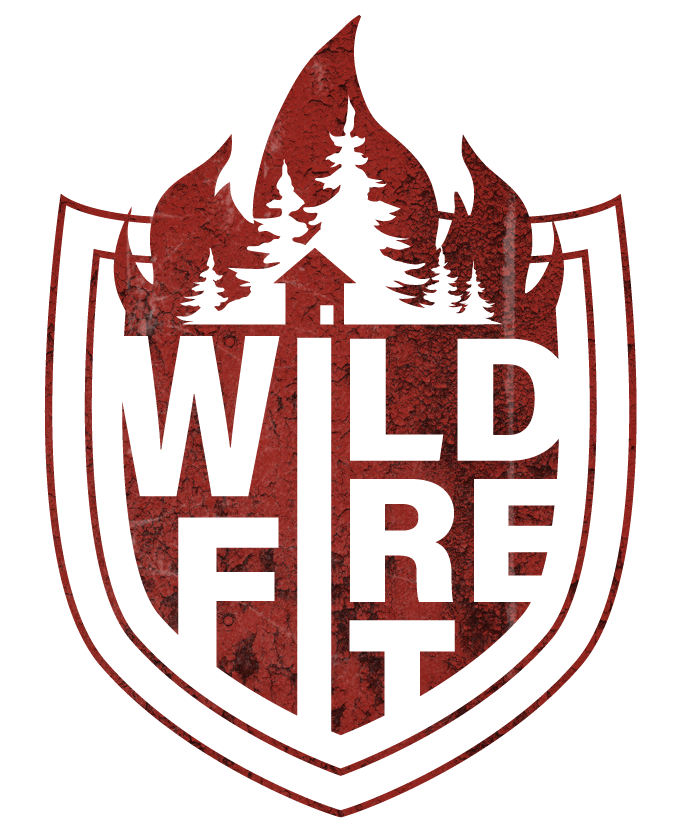For thousands of years the air in summer was filled with a mild smoky haze. People co-existed with fire in the landscape, whether caused by natural phenomena or by humans. Fire was a shaping force: frequent fires created the landscape in which we live here in the western United States. But since full suppression of wildfire became policy over 100 years ago, our landscape has dramatically changed. This western landscape has been denied the maintenance it requires. Devastating wildfire is the result of excess fuel buildup, which then burns catastrophically, threatening communities and severely damaging watersheds.
Fire in the west creates the same nutrient recycling as slow decomposition does in wetter climates. In addition, fires aid in recycling grasslands, opening up meadows, and thinning forests into healthy stands.
The beautiful aspen forests are a product of stand-replacing fire. There is a natural cycle in which the aspens grow after a burn: they nurture the conifers growing in their shade. The conifers grow large enough to overtake the aspens and the aspen stems die. Then in 100 or 200 years, a lightning strike starts a fire, the conifers burn, the aspens (which do not actually die, but survive as a giant root system) sprout again and the whole cycle repeats.

Historically, ponderosa pine forests were very open park-like stands of large trees and fire would burn through every 10 to 20 years, cleaning up needles and debris and thinning the stands to a healthy stem count. The piñon/juniper forests have been slowly creeping into grasslands, which were “short grass prairie.” Frequent fire would thin the new growth and there would be pockets of larger trees, which would withstand the low-intensity grass fire.
Appreciating these cycles requires us to think and see beyond our human timescale. Native peoples have known and practiced prescribed fire for hundreds, if not thousands of years, and have purposely set fire to the landscape to open grasslands and meadows and to thin stands of trees. Elk and deer will always prefer to graze on land that has been recently burned, which provides a higher nutrient content in its new growth.
Landscape and fire management policies are evolving to safely reestablish the natural role of fire in our ecosystems. Today, forest and grassland managers are working to do what fire has done in the landscape for millennia, but the land is vast and the resources are few.
In Taos County, we have several organizations working to get back in alignment with natural cycles. One group is the Taos County CWPP (Community Wildfire Protection Plan) Core Team, which was sparked by the late Ron Gardiner, a Questa resident with a passion for watershed protection. The collaborative group includes federal, tribal, and state agencies, county and municipal governments, neighborhood associations, Firewise Communities* and individual landowners. Anyone is welcome to attend either by Zoom meetings or join us on outdoor field trips until we can all get together again around the table.
This group explores ideas and identifies priorities for “landscape scale restoration.” This involves mechanical fuel reduction and prescription (RX) burning, which are often dovetailed.
There are basically two types of RX burns—broadcast burns and pile burns. Broadcast burns can cover a large landscape very quickly and emulate a natural fire. Fire managers work out details to make sure the fire behavior is within certain parameters for optimum fuel consumption and that the smoke ventilation is the best it can be. The objective is to have a healthy mosaic of land with the most efficient use of resources (people, engines, and sometimes a helicopter), with the least possible amount of smoke impact on communities.

Pile burns work basically the same way, and the process follows mechanical fuel treatments. The excess fuel, usually cut with chainsaws, has been piled and is burned in colder times outside of fire season, when the likelihood of escape is very low. Sometimes a hybrid technique is applied, where the fuels are cut, left on the ground (lop and scatter), and then broadcast-burned.
These days we might see a remote smoke column get larger and wonder why. Managers understand that a natural ignition can be allowed to reintroduce itself into the ecosystem for “resource benefit.” If it is deemed no threat to communities or infrastructure, the fire will be monitored and managed. Any human-caused wildfire (not RX) will be suppressed.
There are hundreds of successful RX fires that run smoothly and safely. Very occasionally something might go wrong. However, the risk of allowing fuels to continue to accumulate unchecked poses a much greater threat. It is not the position of this article to justify accidents, only to put forth that the foremost priority of any prescription burn management team is the safety of firefighters and civilians—and following that is the health and protection of the land and communities that we all love.
To become involved with the Taos CWPP Core Team, contact JR Logan, Taos County WUI Coordinator, at johnrogerlogan@gmail.com.
Find information about Wildfires and RX burns at https://nmfireinfo.com
*Find information about becoming a Firewise community at https://www.nfpa.org/Public-Education/Fire-causes-and-risks/Wildfire/Firewise-USA
Author
-

Chris Coté, of Wildfire Fit, is available for consultation and wildfire risk reduction assessments. Chris has been a wildland firefighter for 20 years with hand crews, helicopters, and engines. He is a former Chief of the Latir Volunteer Fire Department and a NFPA Certified Wildfire Mitigation Specialist. He now runs Wildfire Fit, a business to help us get ahead of the threat of wildfire. Contact him at (575) 779-5937 or WildfireFit.net.
View all posts


